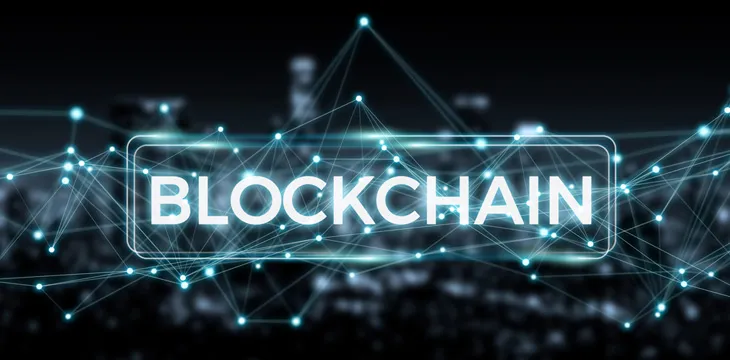|
Getting your Trinity Audio player ready...
|
This post originally appeared on ZeMing M. Gao’s website, and we republished with permission from the author. Read the full piece here.
Blockchain has opened up many possible applications, including payments, tokenization, smart contracts, and in general, data access management. For beginners, a recent article The Crypto Story, written by Matt Levine on Bloomberg, is a good read. It explains quite well in non-technical language some of the problems blockchain could potentially solve, as well as the problems it currently has. Especially, the article makes a good common sense case for the need for a new kind of database to replace the existing ones, something that the current crypto world largely misses.
But it is not a ‘crypto story.’ It is a blockchain or distributed ledger story, as ‘crypto’ is a mischaracterization as well as a misleading movement, and some of the DeFi applications are dubious, or at least we haven’t figured out the real use cases yet.
The world needs a new data paradigm, and this goes way beyond payments, tokenization, and smart contracts as they are currently understood. The new data paradigm will be based on a New Internet integrating IPv6 and blockchain. It will fundamentally change how data is managed today, and it includes not only every database that exists in the world but also general Internet data access rights management, whether it is value related, or security and privacy related.
The current blockchains are not cut for this job
If you really think about these applications seriously, you will realize that it will eventually need a blockchain that has unbounded scalability, as well as extremely low cost of transactions at a small fraction of a cent.
This immediately exposes almost all existing blockchains to be incompetent for broad adoptions.
And Layer 2 (L2) solutions will not solve the problem. See L2 solutions, and More on L2 solutions.
Because L2 solutions do not have any settlement capability, every transaction that needs immediate settlement will need to be settled on Layer 1 (L1). This requires L1 itself to be sufficiently scalable in real use even with useful L2 solutions available for suitable applications.
The core issue is that, to have full blockchain capability (micro payments, smart contracts, tokenization and decentralized data), even with a powerful L2 solution, you still must have a scalable Layer 1 (L1) blockchain to be able to run large numbers of transactions on-chain including settlements and verifications.
How scalable does it need to be? The short answer is ‘unlimited’—Millions or even billions transactions per second (TPS), rather than the common 5-7 TPS (BTC), 20 TPS (Ethereum), or thousands as touted by some other blockchains claiming to have solved the scalability problem.
To become a global solution for Internet transactions which not only include payments, but also all kinds of smart contracts, tokenization and data access/rights transactions, being scalable means L1 transactions per second (TPS) well beyond hundreds of thousands now, millions in near future and even billions in long term, and L2 TPS a further thousands of times of the L1 TPS.
To understand this, let us have a look from the entire Internet viewpoint.
According to a recent estimate, the world’s global Internet traffic is about one petabits per second (1×10^15 bits/s). This estimate appears reasonable when compared with a 2011 paper on Science Journal estimated the communication capacity of Internet was 3 x 10^12 kb/s then. See: The World’s Technological Capacity to Store, Communicate, and Compute Information (science.org). An increase of 300 times in 11 years translates to about a 55% annual growth on average in the last decade. With the explosive growth of Internet of Things (IoT), the future growth of the Internet capacity can easily outpace the last decade.
Following this trend, the global Internet traffic will be at least 1×10^17 bits per second in 10 years.
Assuming the following conditions:
- an average transaction size of 1 kb/tx (as a reference, the size of a simple Bitcoin transaction is 0.25 kb/tx),
- just 1/1000 of the Internet capacity needs to be transacted blockchain (including not only a value transaction layer or Internet of Value — IoV, but any database related transactions for security and authorization purposes), then the blockchain transaction capacity needed to support such a future would be:
Now: 10^9 txs/s (1 billion TPS), on L1 and L2,
In 10 years: 10^11 txs/s (100 billion TPS) , on L1 and L2, and
In 20 years: 10^13 txs/s (10 trillion TPS), on L1 and L2.
And if we further assume just 1/1000 of the blockchain transactions (or 1/1,000,000 of the Internet) will be settled on layer 1, the L1 blockchain transaction capability needed to support such a future would be:
Now: 10^6 txs/s (1 million TPS), L1 only,
In 10 years: 10^8 txs/s (100 million TPS) , L1 only, and
In 20 years: 10^10 txs/s (10 billion TPS) , L1 only.
Therefore, to serve as a data and value transaction layer on the future Internet, the blockchain network would need to have L1 transaction capacity of TPS in billions in just two decades.
And in the above assumes only 1/1000 (one thousandth) of the Internet is on blockchain, and 1/1,000,000 (1 millionth) on L1.
In more practical terms, it is highly conservative to say that a fully capable blockchain supporting blockchain databases, Web3 and LoT would need to have L1 TPS in hundreds of thousands and L2 TPS in hundreds of millions now and continue to grow without limit.
This is the kind of the scale for the future on-chain database, Web3 and IoV supported by blockchain. People who think that maximum TPS at a few thousands is going to be sufficient simply have no touch of what the scale of the reality is. It is one thing to be off by a few multiples, but entirely another to be off by thousands or even a million times.
The notion that one could push nearly all transactions to L2, hoping that an L1 blockchain limited to a TPS of 5–7 transactions could serve as the settlement layer for the whole world, is not even serious enough to be entertained. BTC, as an L1 blockchain, will never be able to do that. Capped at 5–7 TPS by design, BTC is short by many orders of magnitude, so it is a dead end no matter what L2 solutions there may be.
Other blockchains will also need to rethink the matter of scalability in view of the New Internet integrating IPv6 and blockchain.
But there will be many blockchains to share the distributed scale burden, right?
This is another prevailing falsehood. The current state of hundreds of blockchains is not a sign of healthy development but precisely the opposite. It is an ill outcome of an unfortunate development started from the early years of Bitcoin blockchain. See: The real Bitcoin and blockchain; and The Great Diversion that led the entire field to a wrong direction.
To truly develop into a productive and useful system, blockchain must converge at the base layer, while allow unlimited applications on top of the base layer. Internet is an analogy. The Internet is unified on TCP/IP protocol, which allows both robust infrastructures and unlimited applications.
Even the universe is created based on the principle that the law is set with absolute stable unity, while the existence based on the law has unlimited variety. The unlimited variety is possible because of, not in spite of, the stable unity of the law.
With the upcoming integration of the Internet and blockchain on the basis of IPv6 and CGA (cryptographically generated addresses) to form a unified IoV, there can only be one blockchain at the base layer. And that blockchain must have extreme scalability and low cost, in the range of TPS in billions and cost per transaction a thousandth of a cent. Other blockchains will either die or if they have a good enough reason to continue to exist in the market, will be absorbed into the unified IoV and become overlay networks, enjoying the efficiency of the base layer blockchain while maintaining a market niche.
See more: One blockchain as the base layer of IoV.
Scalability in aggregate
Some may argue, if my application needs no more than one transaction per second, why should I care about a blockchain that can reach millions of transactions per second?
The answer is very simple: The scalability of a system is always a matter in aggregate. A blockchain that may meet the needs of a few applications but not everyone’s need will eventually fail and be eliminated from the economy.
A whole different kind of problems arise when L1 and L2 are implemented for solving real world problems. The scalability must be considered in aggregate (versus each application being considered separately).
In aggregate, both L1 and L2 must be scalable, each in its own realm. This is the case even if the so-called L2 application has already made a deliberate sacrifice of not enjoying the benefit of the blockchain for its transactions except for occasional settlements, as in the case of the most current L2 solutions. Such solutions are a dead-end without a scalable L1 in the first place, because a blockchain that cannot scale in aggregate with all applications built on the chain is not going to be adopted by the market in the end, regardless of whether a particular application needs such an L1 scale or not.
Watch: The BSV Global Blockchain Convention presentation, BSV Blockchain: A World of Good

 07-18-2025
07-18-2025 





